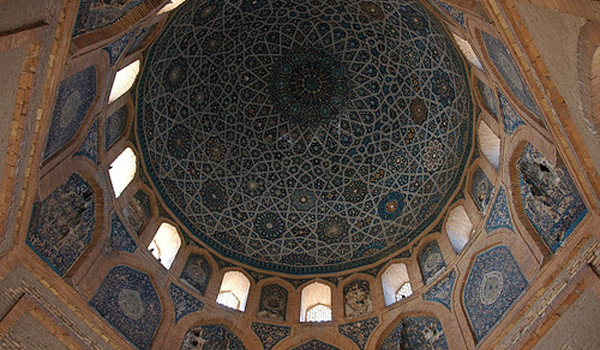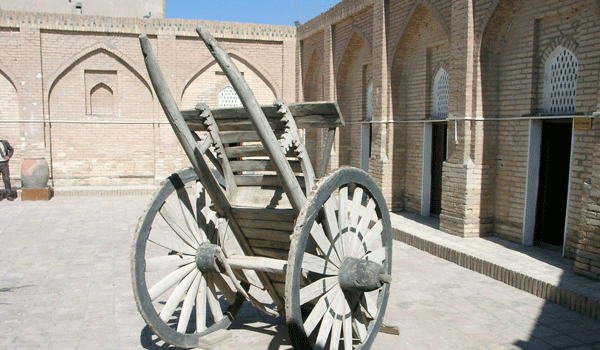|
|
|
|
|
| ||||||
|
The Great Silk Road and Turkmenistan
The Great Silk Route starting from Chinese city Ch’ang-an ( modern Xi’an) to the shore of the Mediterranean and spanning over Asia and Europe with a total length of 7,000 km, is a history today. A history of more than 2500 years. The traditional date for the opening of the Silk Road is 105 B.C. when Chinese arranged a fact-finding mission and started their trek to the west. Silk was the major commodity, transported along this road. For centuries, Chinese kept the secret of its manufacture, banning to take silkworm eggs out of the country. One of the greatest trading routes in the world was christened, die Siedenstrasse, the Silk Road, by 19th German explorer Baron Ferdinand von Richthofen. However not only luxurious Chinese silk had been traveling along this road but also a great number of raw materials such as bronze and cobalt, Chinese porcelain, Venetian glass, Afghan jade, lapis lazuli and rubies, Iranian turquoise, tin and copper, Siberian furs, Arabian incense and perfumes, Indian cotton, heavenly horses, Mervian steel and melons, Egyptian papyrus and other luxuries, flowers and vegetables, moreover new thinking and ideas, arts, religions, modern technologies and other practical developments. Some researches suggest that the Parthian parchment inspired the Chinese to develop paper for writing, which replaced the previously used silk and bamboo.
The Silk route was not a single road. It was an unparalleled and very complicated network of roads. Its main branches skirted north and south of the Tarim basin across Central Asia and Iranian plateau further to the west, meeting at Dunhuang at one end and Kashgar at the other. From Kashgar southbound traffic crossed the Karakorams; westbound the Tian Shan. From Sogdiana caravans could follow either the Oxus or the Jaxartes on the way to the Aral sea and further to Russia. But more popular branch was southern, taking travelers across the inhospitable Taklamakan ( ‘To come in and never come out’), Kizil Kum ( ‘Red sands’) and Kara Kum ( ‘Black sands’) deserts to the west. The city of Bactra, which perhaps is not so familiar to the modern travelers, was roughly in the center of the Silk road and was also the gateway to India. One of the major centers of Buddism Bactra was visited by the great Arabian traveler Ibn Battuta, who also spent some time in Kune- Urgench, the medieval capital of Khorezmshakh state, which was located on the northern caravan branch to the Caspian Sea and Russia. The rise of this part of the Silk Road created favourable conditions for Kune Urgench to prosper and become the most magnificent city in the East.
From Bactra travelers reached the key caravan city of Merv, in ancient times called Alexandria Margiana and later Antiochia Margiana. Other silk travelers approached Merv by a different route. Coming from Bukhara and after crossing the Oxus, which was a very difficult affair and then resting in Amul, the remains of which are still visible at the suburbs of modern Turkmenabat-ex Chardjou, and going further to Merv through formidable Kara Kums. From Abiverd, which in the medieval times became even more prosperous than medieval Nisa, some smallish caravans cut straight across the Turkmen- Khorosan mountains on the way to Nishapur. Others undertook a trek via Old Nisa to the Parthian capital Ctesiphon, built in 129 B.C. From Iranian plateau down into Mesopotamia on the way to Dura- Europas, founded on the banks of the Euphrates by Selecids in 280 B.C., which in the 1st century B.C. became one of the flourishing Parthian stronghold. In their times the Parthians were credited for initiating the trade between China and the West. They supplied the emperors of China with ‘the horses of heaven’ and in return received silk. From Dura some caravans might go northwest via Palmira and Aleppo to Antiochia and across the mountains and valleys of western modern Turkey all the way to the Mediterranean. In different periods and times certain civilizations shaped the image of this vital route. The fortunes of these civilizations rose and fell with the Silk Road. So many centuries have been passed from it’s decline, but these days you have a good chance to rediscover this road with the aim to recreate its atmosphere and perhaps to gain experience of the hundreds of thousands of traders who had been traveling along the Great Silk Road since ancient times. |
||||||
|
Travel info | Turkmenistan | Awaza | Tours | Highlights | Visa support | Hotels | Contact us
|

